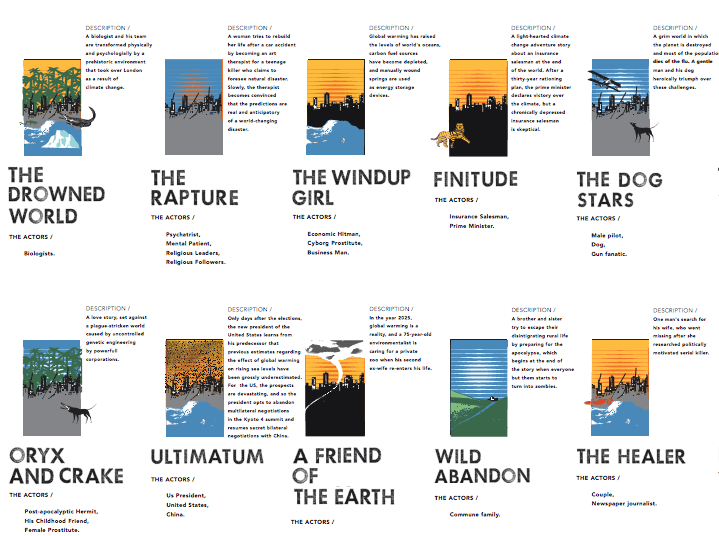As fears about global warming become ever more culturally ingrained, "climate fiction" has gone from a once-fringe genre to a standard literary device.
Cli-Fi, as it's abbreviated, is set in a near or long-term future where the fallout from global warming, be it flooding or mass extinctions, is not only apparent, but an aspect of everyday life. Spanning genres from literary fiction to thrillers, Cli-Fi acts as a barometer of our own ecological anxieties.
Are we more concerned about the end of civilization or the end of species? Are we more compelled by melting ice caps or by runaway genetically modified organisms? An analysis of 27 genre-defining climate fiction novels, conducted at the University of Amsterdam, uses a visual language to reveal the top tropes in the category.
Destroyed cities were far and away the most popularly cited effect of climate change, followed by flooding. This makes sense: most of the world's population lives in cities, and flooding is a concern anywhere there's water, rain, or coastline.
Taken together, this project offers a compelling portrait of climate change fears beyond what scientists and pundits can provide.
For the full description of the project, click here. To download a PDF of the full visualization of the novels, click here.


Comments (0)
Share your thoughts and join the technology debate!
No comments yet
Be the first to share your thoughts!